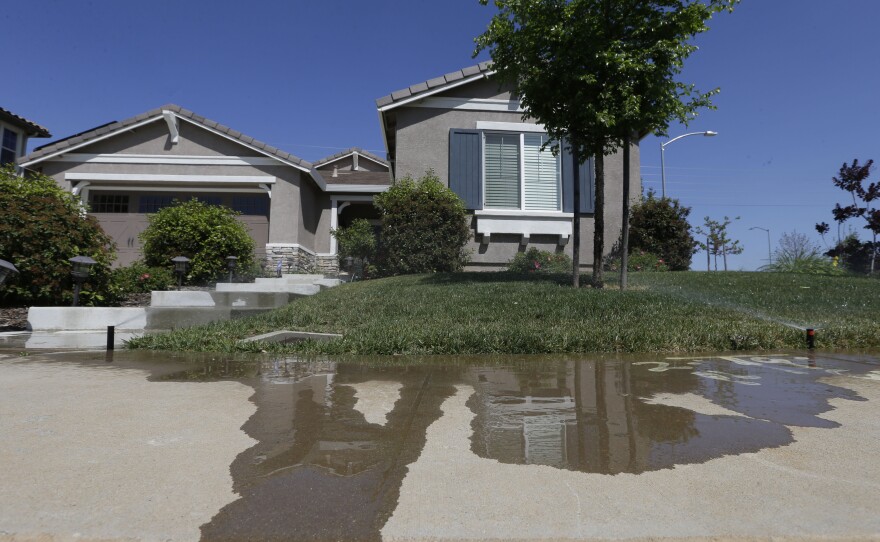Californians won’t be able to water their lawns for 48 hours after rainstorms or let their sprinklers run onto the sidewalk under mandatory water restrictions state regulators adopted Tuesday as a drought continues despite heavy December rain and snow.
The rules could take effect as soon as the end of the month and could result in a fine of up to $500 per day, though regulators stressed they want to encourage voluntary conservation and that it will be up to local authorities to decide on enforcement.
The State Water Resources Control Board’s action comes as Californians continue to fall short on Gov. Gavin Newsom’s call for a voluntary 15% reduction in water use compared to last year. Between July and November, the state’s water usage went down just 6%.
The new restrictions follow an extremely wet December that state officials warned may not continue during the winter months that normally are the state’s wettest. Weather patterns have become more unpredictable due to climate change and state climatologist Michael Anderson said forecasts show January, February and March could be drier than average.
Earlier forecasts didn’t predict such a wet December, which saw record amounts of rain and snow in many areas. In mid-December, about 80% of the state was in extreme or exceptional drought conditions. By the end of the month, only about a third was experiencing those conditions, according to the U.S. Drought Monitor that tabulates conditions.
Despite the rain, significant parts of the state’s water system are still under stress from the extremely dry conditions earlier in 2021 that dropped many of California's largest reservoirs to record and near-record lows.
“Conserving water and reducing water waste are critical and necessary habits for everyone to adopt as we adjust to these uncertainties and we build resilience to climate change, so adopting emergency regulations now just makes sense,” said Eric Oppenheimer, chief deputy director for the state water board. “We need to be prepared for continued drought.”
Northern California was wetter than Southern California in November and conserved significantly more water.
Regions north of the San Joaquin River, including Sacramento and San Francisco, used between 17% and 26% less water than November 2020, while Los Angeles, Orange and San Diego counties that account for 55% of the state’s population used nearly 1% more, according to state data.
Among the water uses that won’t be allowed under the new rules: outdoor watering that results in excessive runoff into the street and sidewalks; using water for landscaping and irrigation during the 48 hours after storms that bring at least .25 inches (.63 centimeters) of rain; washing cars with hoses lacking shut-off nozzles; using potable water to wash driveways, sidewalks, buildings and patios and for street cleaning or to fill decorative fountains or lakes.
There are some exceptions. For example, trees in street medians can be watered, while turf cannot. The rules take effect once an administrative review is completed.
The state adopted similar restrictions during the five-year drought that ended in 2017, and some cities and local water districts made them permanent. State water board officials were unable to say how many of California’s nearly 40 million people are under such rules or exactly how much water they expect to save.






